How to make an ax taiga with your own hands from the usual
For every hunter or tourist, a knife is an indispensable companion. However, in severe conditions of the taiga, its qualities may not be enough. In such a situation, a taiga ax comes to the rescue. This is a universal and reliable tool designed to solve various problems. Each lover of hunting or tourism can, if desired, make a taiga ax with their own hands.
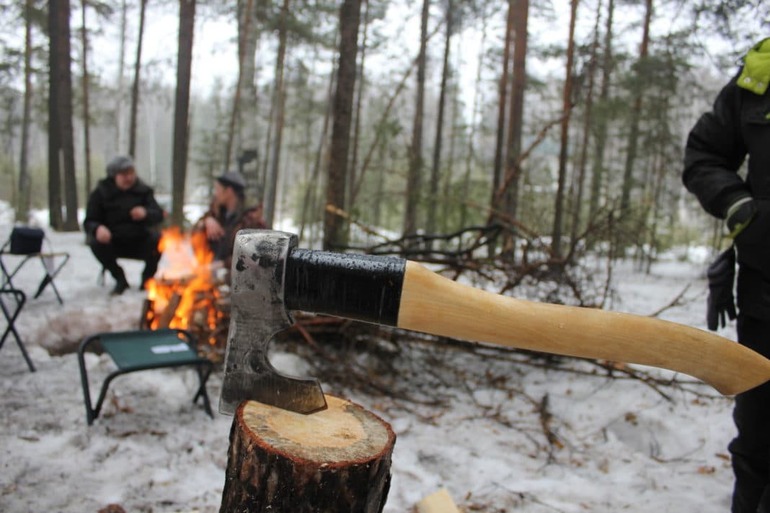
The advantages of the taiga ax
The chopping tool is simply indispensable for hiking and hunting. For rough work with trees, you can use the classic cleaver. However, a taiga ax has several advantages:
- convenient to use when installing huts, making hunting traps and simple crossings through water bodies;
- can be used to protect against attacks of wild animals;
- It is useful not only for cutting trees, but also with its help you can quickly clear the logs from the bark and split the wood along the fibers.
It is because of this that the Siberian ax is very popular. The versatility of the tool gives it a special shape. Unlike a carpentry ax, a taiga ax has some differences:
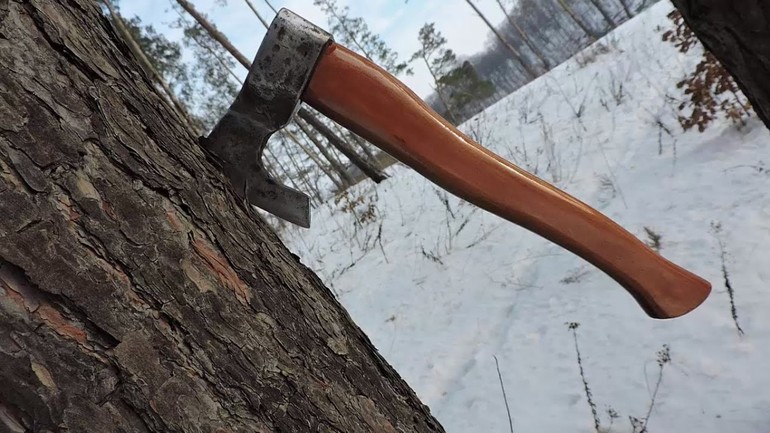
- Long grip. Thanks to this, you can make a wide swing, which increases the force of impact.
- Drank the top sock. As a result, the structure is strengthened and the tool can be used at low temperatures.
- On the top of the head is a beard to increase the strength of the ax.
- The butt is hot.
- A rounded blade allows you to perform various forestry work.
When making a taiga ax with your own hands, you should pay attention to the unusual geometry of the tool, as well as a special approach to its creation.
The ax is planted manually with wooden wedges. To perform this operation, the machine cannot be used. For the manufacture of the handle you need to use high-quality birch.
Components
All the features of the Siberian ax become apparent upon closer examination of the main elements of the construction of the tool. These include an ax and a head.
Metal head
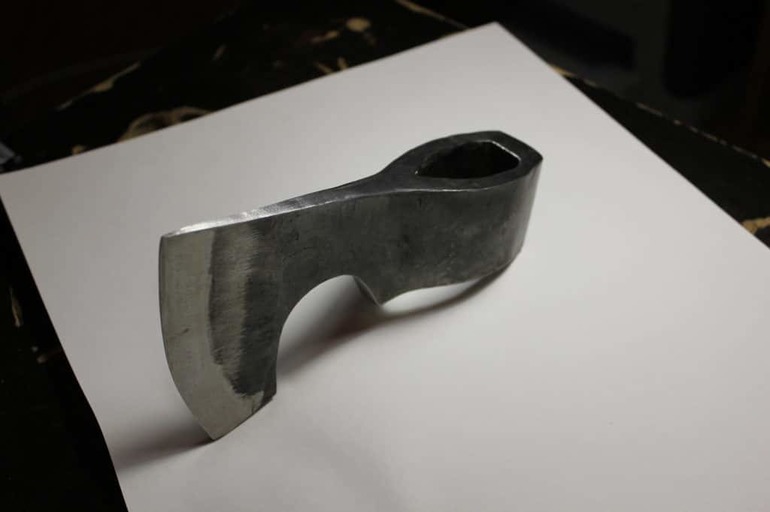
At the first glance at this element of the construction of the tool, the serious difference between the Siberian hatchet and the carpentry hatchet becomes apparent lack of top. In addition, the blade has not a classic straight shape, but a rounded one. Thanks to this, the tool is able to penetrate deeper into the tree. Another advantage of the rounded shape of the blade is the ability to chop wood not only across, but also along the fibers.
The head is attached to the ax with a long beard, absorbing at least 50 percent of the impact power. This reduces the risk of breakage of the handle. When a person is in the taiga, this is extremely important, since the opportunity to quickly repair the tool will not be presented.
The butt of the taiga ax is standard. There is also an eye in the head into which the handle is inserted. A wooden wedge is used to secure the structural elements of the instrument.
Ax design features
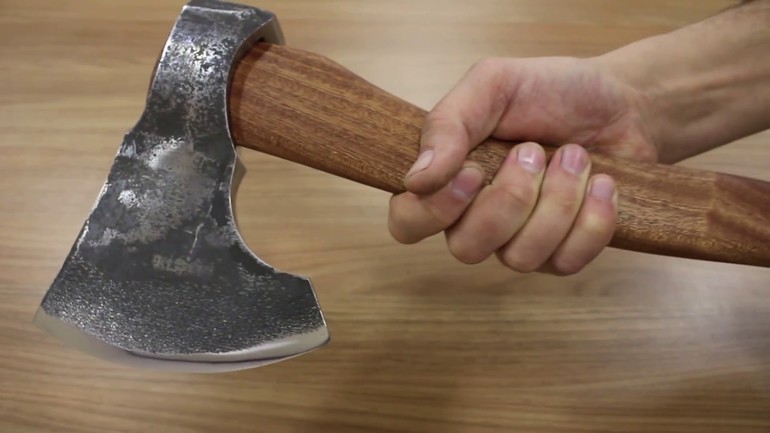
Compared with conventional carpentry tools, the taiga is equipped with a longer handle. It is desirable that this figure be at least 50 cm. Only in this case the hatchet will be most convenient to use. When connecting an ax and a metal head, special attention should be paid to the angle between these elements.
In a carpentry tool, this figure is 90 degrees. When making a Siberian ax with your own hands, the angle must be reduced. The optimal value can be considered 65−75 degrees. Another important requirement for the ax is the lowest possible weight. Otherwise, your hands will quickly get tired. That is why in the manufacture of the handle it is recommended to use high quality birch.
Manufacturing recommendations
Not everyone can forge the head of the instrument on their own. This is a fairly complex process that requires certain skills. However, if the desire to get a light camping tool is great, then you can make a taiga ax from the old one with your own hands. Before working with a metal head, it should be inspected for corrosion. If it was discovered, then the iron part of the instrument should be soaked in vinegar for 24 hours.
After that, the remaining rust is removed with a simple brush. The algorithm for further actions is as follows:
- First you have to cut the front ledge flush with the butt. If after the operation is completed a small protrusion remains on the instrument, then it can be left, but ideally, it is still better to remove it.
- Using a grinder, saw off the back. In this case, it should get a rounded shape.
- A semicircle is cut out on the bottom of the head. This will reduce the weight of the hatchet, as well as make its girth more convenient.
- Two angles of the butt are cut to increase the maneuverability of the Siberian ax.
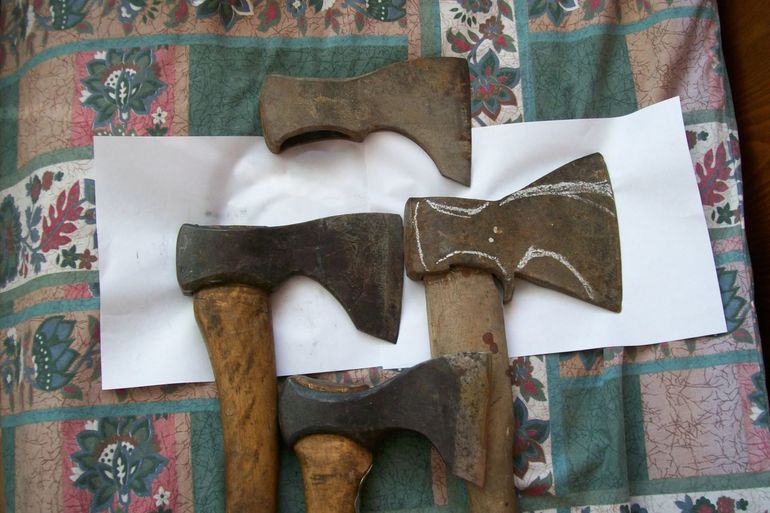
After performing all these actions, the tool head will be ready. At the final stage of manufacturing the Siberian hatchet from the Soviet one, it remains only to sharpen it correctly. The next step is to make an ax. This process needs to be given no less attention in comparison with the metal part of the product.
If the geometric parameters of the handle are precisely observed, then the tool will be as convenient as possible to use.
The easiest way to make a hatchet is from pine. This type of wood lends itself well to processing, but at the same time there is a high risk of damage to the handle during operation. Thus, it is better to pay attention to ash or maple. The length of the ax is 50-120 cm. The diameter of the workpiece should be at least 13 cm, and the length should be 20 cm more than the final version. It is extremely important to carefully dry the workpiece, leave it for at least 2 months in a room with a temperature of 22 to 25 degrees. After that, the hatchet is processed using a chisel.
Assembly and sharpening
After both parts of the Siberian hatchet are ready, it remains to connect them correctly. To solve this problem, it is recommended to use a piece of plain gauze or a medical bandage, as well as an epoxy resin. Additional fixation of the metal head on the handle is carried out using wooden wedges. Immediately after completing this operation, the product should not be used; it is better to wait at least 48 hours.
The tool will become completely ready after proper sharpening. At any good hunter or tourist he is always carefully prepared for operation. Going into the woods with a blunt hatchet does not make sense. Unlike ordinary carpentry tools, the Siberian blade has a rounded shape. You can sharpen the hatchet manually or using a machine.
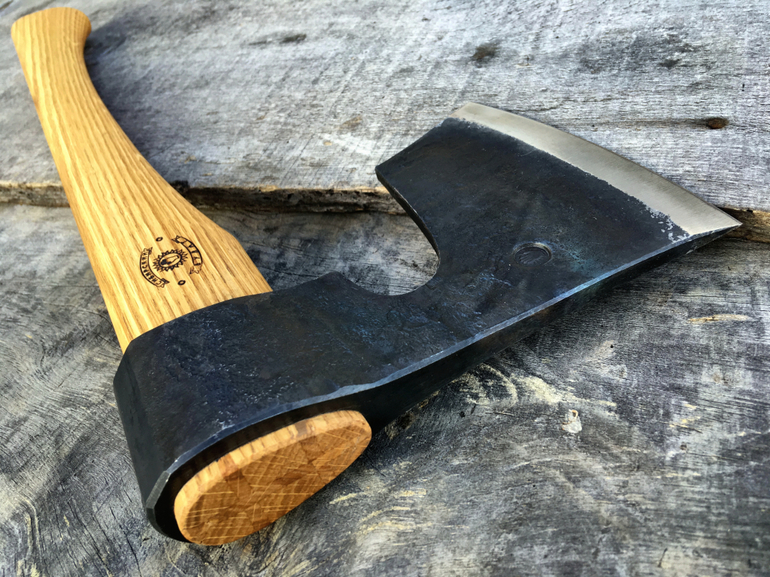
The first option is highly labor intensive and is suitable for those who like to care for their guns. To solve this problem, you will first have to make a template of tin. It must be as large as the drawing. During sharpening, the template must be applied to the blade to control the angle. The blade is processed using a wooden block glued with sandpaper.
Using a special machine, the tool can be sharpened much faster. To do this, adhere to the following recommendations:
- the machine is installed on a flat surface;
- markers on the blade mark the change of angle;
- the tool is sharpened at low speed;
- at the final stage, finishing paste is applied to the working part of the product and polishing is performed.
When the hatchet is ready, it should be stored in a special case. Each person with the skills to work with certain tools will be able to make a taiga ax out of the ordinary.
This is not the most difficult process, but it is comparatively laborious.
- How to choose a vacuum cleaner taking into account the characteristics of the house and coatings?
- What to look for when choosing a water delivery
- How to quickly create comfort at home - tips for housewives
- How to choose the perfect TV - useful tips
- What to look for when choosing blinds
- What should be running shoes?
- What useful things can you buy in a hardware store
- Iphone 11 pro max review
- Than iPhone is better than Android smartphones



